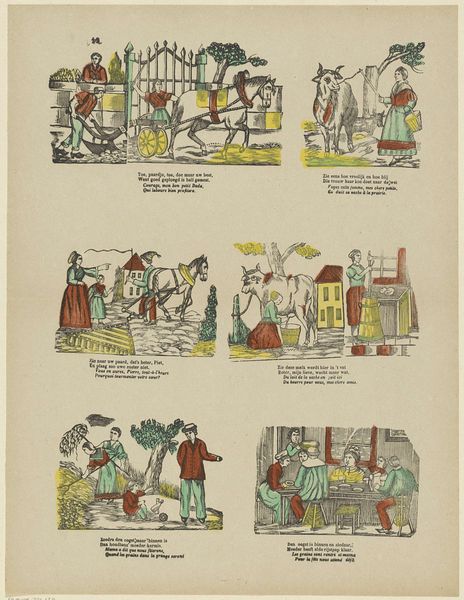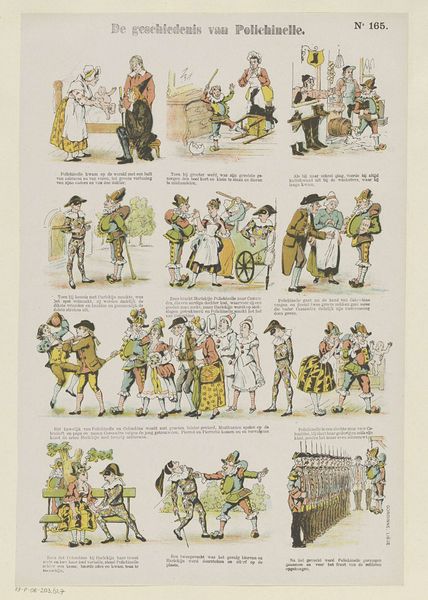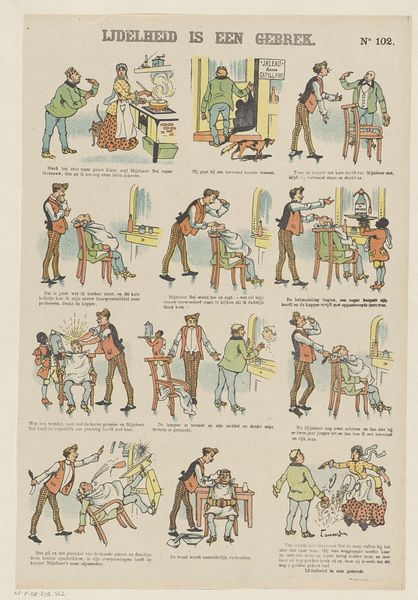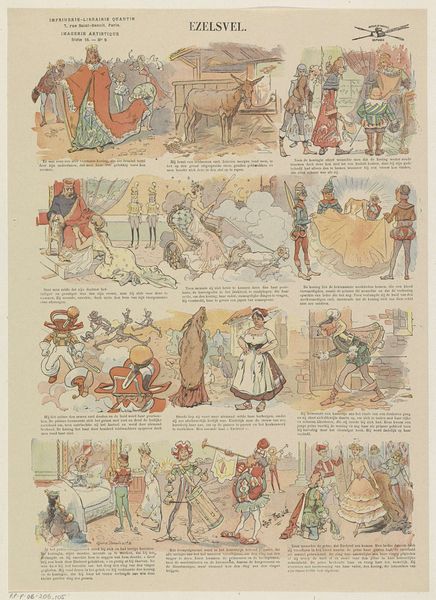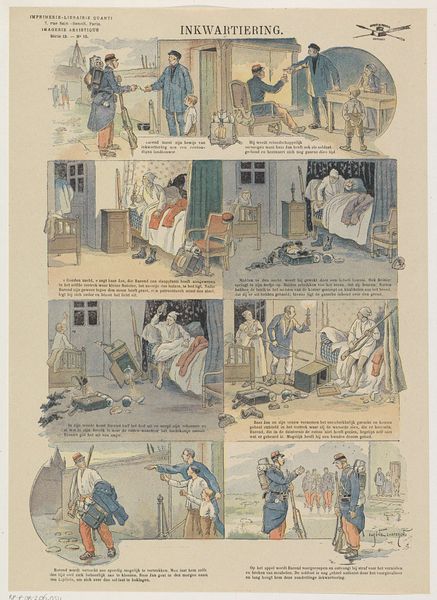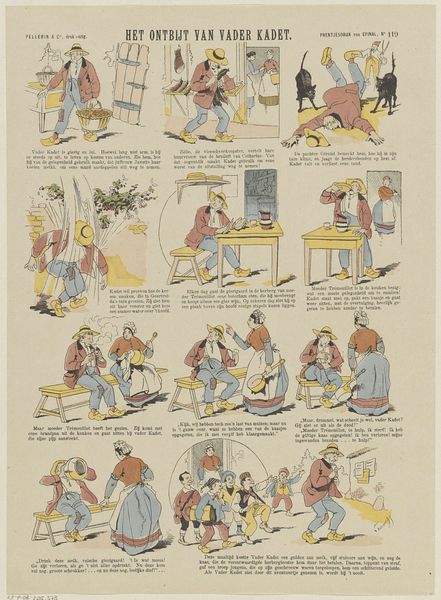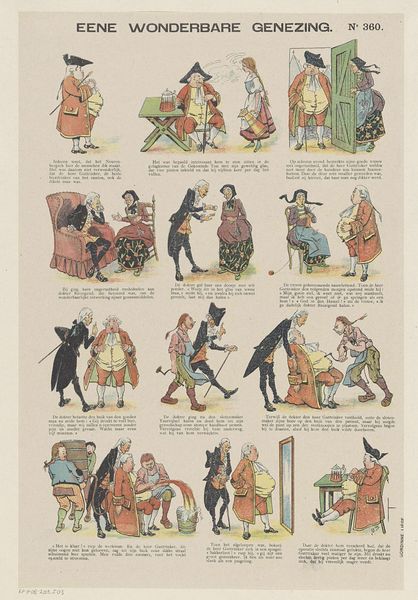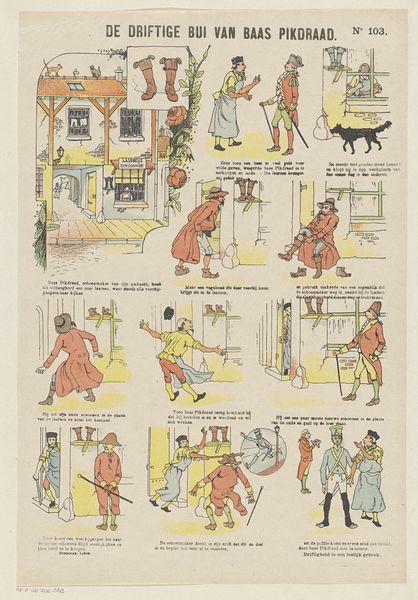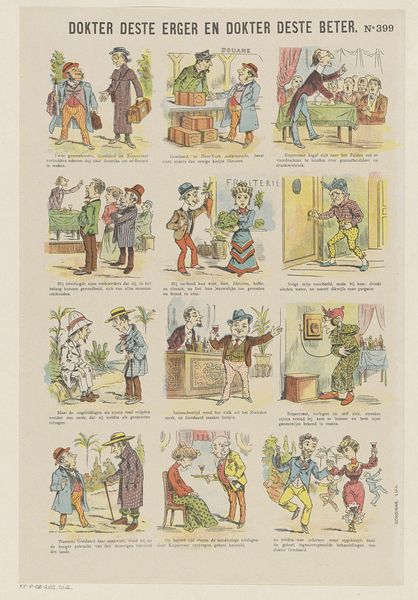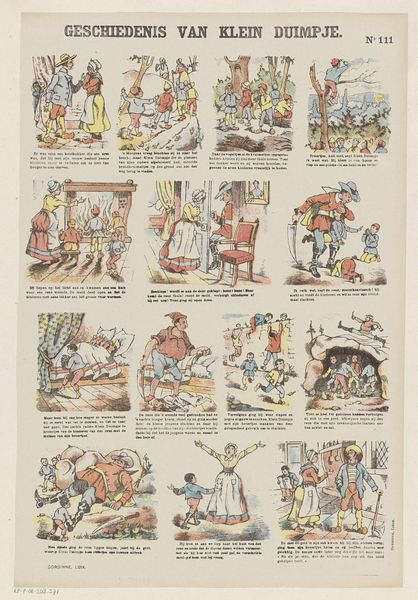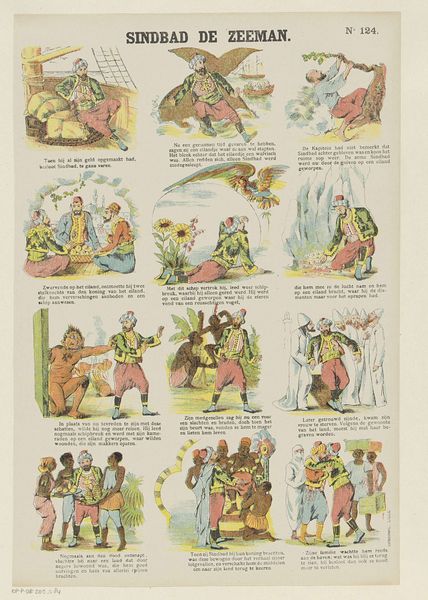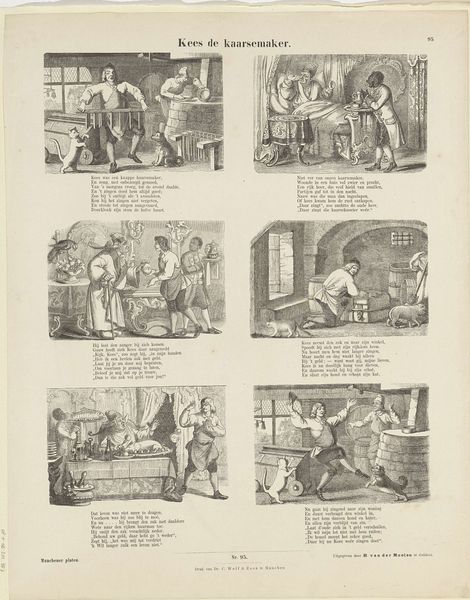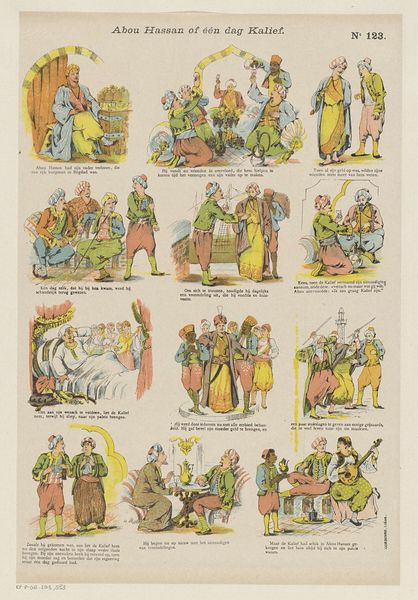
print, ink
#
narrative-art
# print
#
ink
#
comic
#
genre-painting
Dimensions: height 368 mm, width 264 mm
Copyright: Rijks Museum: Open Domain
Curator: Editor: We’re looking at "De dieven bedrogen," which roughly translates to “The Thieves Deceived," a late 19th-century print in ink by Ducourtioux & Huillard. It’s arranged in a comic strip format, and it’s got a whimsical, lighthearted mood. How do you interpret this work, considering its historical context? Curator: Well, consider this: prints like these circulated widely, making visual narratives accessible to a broad audience. But what are we *actually* seeing? What’s the social commentary bubbling beneath the surface of this so-called "lighthearted mood?” Is there a critique of social class, or even perhaps commentary on the anxieties surrounding urbanization during this period? It presents these supposed ‘thieves’ almost as sympathetic characters – down on their luck maybe? What is actually being ‘stolen’? Editor: You bring up an interesting point about accessibility, and how the availability of a visual narrative impacts those without the ability to read. That actually turns my initial impression on its head! Curator: Exactly! And who is being “deceived,” really? The would-be victims of theft who protect their bourgeois possessions at all costs? What values are being enforced and challenged by representing class relations as slapstick comedy? Also, are we complicit as viewers in its implicit mockery of poor people trying to survive in late 19th century France? Editor: So it’s not just a funny comic; it is really asking us to critically engage with power dynamics. Curator: Absolutely! Consider how these images may reinforce existing prejudices, normalising and legitimizing social inequality even when supposedly telling a harmless joke. The artist’s work prompts conversations about complicity, morality, and what it means to "get away with something" in unequal societies. Editor: That really offers a new perspective. Thanks for sharing your insights. Curator: Likewise. I found your observation on the print's tone crucial to interpreting its cultural influence.
Comments
No comments
Be the first to comment and join the conversation on the ultimate creative platform.
